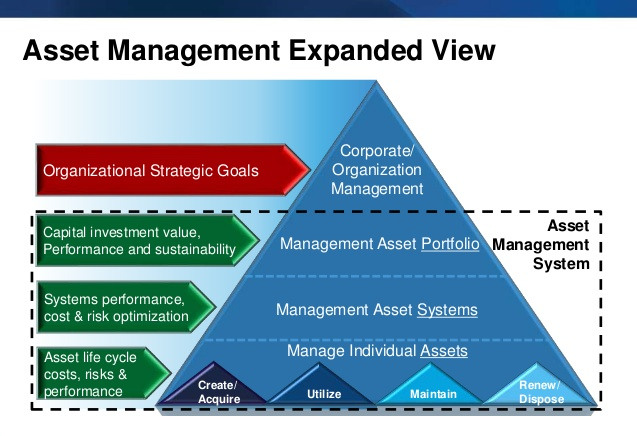Ativos e o Ciclo de Vida Ativo

Ativos são definidos da seguinte forma: “Um ativo é um item, coisa ou entidade que tem valor potencial ou real para uma organização”. Com base na ISO 55000, 55001 e 55002, a gestão de ativos é descrita como “atividade coordenada de uma organização para obter valor dos ativos”. Consecutivamente, isso é mais amplo do que ativos físicos, o que traz uma meta e foco significativos para mais empresas.
A gestão de ativos compreende oportunidades, equilíbrio de custos e ameaças em relação ao nível desejado de desempenho dos ativos, o que é essencial para o maior retorno sobre o investimento e para atingir os principais objetivos da organização. Um dos principais objetivos é minimizar o custo geral de vida útil dos ativos, que pode ser afetado por outros indicadores, como continuidade de negócios ou risco durante o processo de tomada de decisão
Além dos KPIs tradicionais de gestão de ativos, como RAV e nível de disponibilidade, há três conceitos que devem ser considerados na implementação da gestão de ativos de acordo com a ISO 55000.
Veja abaixo:
1. Custo total de propriedade
O Custo Total de Propriedade é uma análise que deve levar em conta todos os custos relacionados à propriedade e operação de um ativo. A ISO 55000 incentiva as empresas a observar os custos de uma perspectiva de ciclo de vida, incluindo, por exemplo, compra, instalação, operação, manutenção e outros.

Existem quatro estágios principais do ciclo de vida do ativo:
- Planejamento: Esta etapa estabelece e verifica os requisitos de ativos e seu potencial para atender às necessidades de prestação de serviços. Em todas as etapas do planejamento, é crucial garantir que o desenvolvimento contínuo agregue valor à organização.
- Aquisição: O planejamento de aquisição inclui atividades envolvidas na compra de um ativo com o objetivo de garantir uma aquisição com boa relação custo-benefício. Isso abrange atividades como projetar e adquirir um ativo. A aplicação adequada dessas atividades garante que o ativo esteja apto para uso. A organização deve decidir se o ativo será comprado ou construído perpetuamente.
- Operação e manutenção: O plano de gestão de ativos deve ter um alto foco em questões de manutenção de ativos, especialmente durante seu ciclo de vida.
- Descarte: Quando um ativo atinge o fim de sua vida útil, ele pode ser tratado como um excedente ou, de outra forma, é considerado um ativo de baixo desempenho.
2. Gestão de riscos para proteger ativos e negócios
A ISO 55000 estabelece que cada decisão deve ser baseada em uma avaliação de risco. Portanto, é essencial ter uma estratégia de gerenciamento de risco para avaliar possíveis caminhos considerando as consequências dos incidentes e a probabilidade de ocorrência.
3. Otimização contínua
Outro princípio importante da ISO 55000 é sua otimização contínua, que precisa ser avaliada de tempos em tempos, de acordo com a evolução do negócio, de acordo com o mercado.
Gestão de ativos
Os ativos têm sido administrados e mantidos profissionalmente por gestores por décadas. No entanto, os desenvolvimentos econômicos e financeiros dos últimos anos alertam que o que temos feito no passado não será satisfatório para lidar com os desafios do futuro.
- Os ativos existem para fornecer valor para a organização e as partes envolvidas;
- A Gestão de Ativos transforma a intenção estratégica em tarefas, decisões, atividades técnicas e recursos financeiros;
- A Gestão de Ativos fornece garantia de que os ativos cumprirão e desempenharão sua função.
Mais informações ↓
Assets & the active life cycle – PdM (inglês)
Ativos e o ciclo de vida ativo – PdM (português)
Assets & the active life cycle – TPM (inglês)
Ativos e o ciclo de vida ativo – TPM (português)
Assets & the active life cycle – SAMP (inglês)
Ativos e o ciclo de vida ativo – SAMP (português)
Assets & the active life cycle – IMW (inglês)
Ativos e o ciclo de vida ativo – IMW (português)
Assets & the active life cycle – Raising the “R” (inglês)
Ativos e o ciclo de vida ativo – Elevando o “R” (português)
Assets & the active life cycle – the plant wellness way (inglês)
Ativos e o ciclo de vida ativo – o caminho para o sucesso da plantas operacionais (português)
Assets & the active life cycle – DOCTOR (inglês)
Ativos e o ciclo de vida ativo – DOCTOR (português)
Assets & the active life cycle – ACE 3T Standard (inglês)
Ativos e o ciclo de vida ativo – Padrão ACE 3T (português)
Assets & the active life cycle – Capital, operational & maintenance decision making (inglês)
Ativos e o ciclo de vida ativo – Tomada de decisão sobre capital, operação e manutenção (português)
